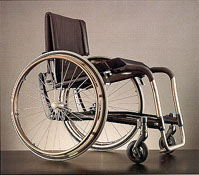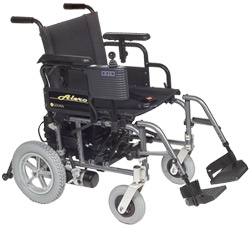
Team: 04-0001
 |
|
The Past In the past, technology to help the disabled was extremely under-developed and limited compared to modern technology. In the past the disabled were quite limited in their choices, usually having the freedoms to only eat and sleep, no daily pleasures of life were available to them, let alone luxuries. Wars and crippling diseases spread through the population leaving many people disabled and lacking mobility. Disabled people were often treated with prejudice and research into helping the disabled achieve a better quality of life for themselves was limited. The absence of technology and research in the past caused a lot of pain and discomfort to the disabled. The positive side of the pain and discomfort was the sudden want of acquiring more information and demands that more research be done into easing the plight of the disabled.
As research into assistive technologies advanced many devices were built to help those with disabilities achieve a higher quality of life. Wheelchairs were invented and improved upon, devices to aid in walking such as crutches and walkers were used. Prosthetic limbs were developed to replace limbs that were missing at birth or became detached for whatever reason. These technologies all helped to advance the quality of life of those with disabilities. However, they still depended upon the operator to make decisions and limited the mobility of those using it. For example, a standard wheelchair cannot go up stairs nor can it make decisions for the operator. A person who is severely disabled or possibly quadriplegic could not take advantage of these devices and their fate in the past was to rot away in bed. As electronics technology increased we began to explore assistive robotics or using robots to help those with disabilities. The first of these devices were simple devices designed to ease the physical load of the individual and add mobility to the user.
They amounted to little more than wheelchairs with motors. Once again, these devices were not truly robotic as they made no decisions for user, instead taking commands via a joystick or in more advanced cases voice commands. These devices allowed for a greater range of people to take advantage of them. Wheelchairs that were voice operated could be used by people with no arms. Eye and even breath operated wheelchairs have been developed. These motorized chairs could not navigate, climb stairs or even allow the user to manipulate objects. Further research and advancements in robotic technology has lead us to where we are today.
|

